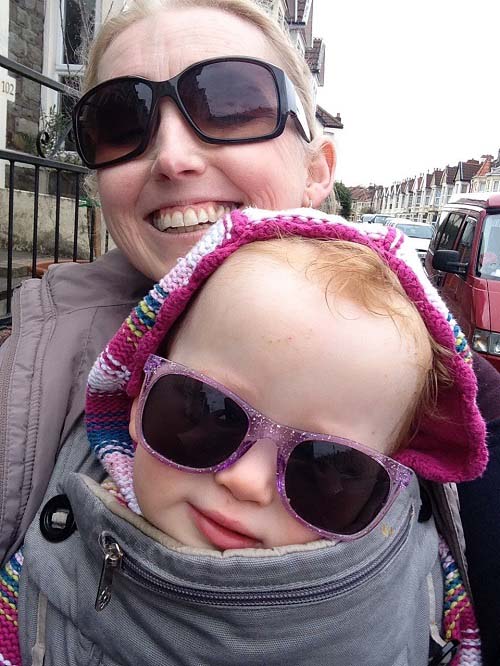Blood helped me to see again!
Dr Jo Daniels, 36, from Bristol, has the autoimmune disease Sjögren's syndrome. Her immune system has attacked her own tear glands, causing her eyes to dry out. To allow her to see properly and live a normal life, Jo uses a serum made from – donated blood!
How a little-known blood component helps treat dry eyes
 Jo had tried various treatments, including very painful surgery on both eyes, but they failed to cure her condition. It was only when Jo was prescribed Serum Eye Drops (SED) that she was able to get her life back.
Jo had tried various treatments, including very painful surgery on both eyes, but they failed to cure her condition. It was only when Jo was prescribed Serum Eye Drops (SED) that she was able to get her life back.
Jo is a clinical psychologist and lecturer at the University of Bath, and a mum of two-year-old Oona. She said, "I had got to the point where I couldn't see. I couldn't drive. I was off work for four months and I thought my career was over. It was really upsetting because my daughter was 18 months old and I was afraid I would not be able to see her grow up." Jo uses the serum hourly, every day and said if she didn’t have it, "Things would become awful again."
She added, "I can only see because people donate blood… I know people are aware that blood saves lives - literally saves lives - but also without blood I wouldn't be able to see my children or live my life as I know it. It saves me terrible pain, my vision and my emotional wellbeing.
"I can't even describe how grateful I am to people who donate blood, for the impact this has had on my life and the lives of my husband and daughter, it is completely immeasurable.”
What are Serum Eye Drops (SED)?
SED are prescribed when artificial eye drops and other interventions fail to treat dry eyes. The serum can either be extracted from the blood of the patient (autologous) or a blood donor (allogenic).
Jo receives allogeneic eye drops, made from blood donated by male A and AB group donors at Liverpool and Manchester donor centres. The blood is collected into ‘dry’ collection bags (without anticoagulants) and allowed to clot. Serum is then separated out and diluted to prepare the drops, which are then delivered to the patient’s home.
In this issue of The Donor magazine
Helping young people get the message
Save someone's life while going about yours
Have you had the conversation?
